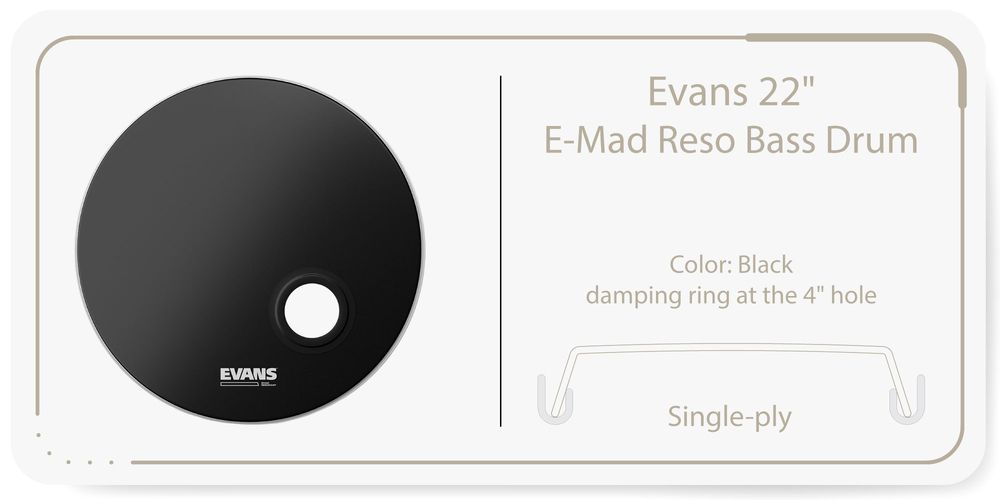3. Bass Drum Heads
A pre-dampened bass drum batter head suits many music genres
When it comes to a good bass drum sound, the requirements are quite different from other drums in the drum set. Most modern music styles like rock, pop, funk, hip-hop, and metal need a mix of a more or less pronounced attack sound and a good amount of bass or low-end. Details in the mid frequencies or accurate representation of many dynamic levels usually aren't needed. Of course, there are exceptions to the rule.
To achieve the mentioned sound, the pre-dampened bass drum head has become standard. Models like the Remo Powerstroke 3, the Evans Emad, or the Aquarian Superkick are found on many bass drums because the sound is easy to handle both live and in the studio. Many manufacturers also include patches, small stickers placed at the beater impact point, which significantly increase the lifespan of the head. An added bonus for many styles: the attack sound is further enhanced, which particularly boosts the kick drum's impact in rock and metal.

The bass drum resonant head also plays a significant role in the sound
Many drummers only pay attention to their bass drum resonant head once, namely when it comes to cutting a hole in it after buying the drum set. However, it's worth experimenting here with heads and damping because even the size and position of this opening have a big impact on the sound. If you skip a hole, the bass drum will sustain longer because the air inside moves more frequently between the heads. A small, off-center hole reduces sustain and slightly increases attack. A large, centered hole, on the other hand, creates a very compact, short bass drum sound because the air can escape quickly.
But which resonant head is best? If you want to keep complete control over the sound possibilities, choose an unported bass drum head. For rockier, focused tones, the ready-made products from manufacturers are recommended. For example, the Evans Emad Reso with a damped front hole is popular, and a more affordable option is the Remo Encore Ebony BD Hole. But you can also buy heads with your drum manufacturer's logo. These are usually common products, just with a big label, for example, from Ludwig or DW. Some manufacturers also offer bundles with batter and resonant heads.
Bass drum heads for more organic jazz and retro sounds
As popular as the "set-and-forget" sound of pre-dampened bass drum heads is, it doesn't work in all settings. Fans of jazz and retro sounds, in particular, prefer a more centered, natural sound of their bass drum. Open sounds offer more manipulation options in the studio, even if it ultimately comes down to damping with pillows or similar. In general, for a more open sound aesthetic, single-ply or double-ply heads without a damping ring are a good choice. Tuned high, they produce a longer, tonal sound with more overtones and midrange, but when tuned low, they can also develop plenty of punch. Another advantage is that you can precisely control the desired damping level by working with soft textiles, bass drum pillows, or felt strips.





